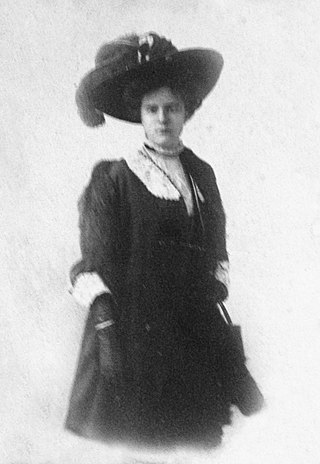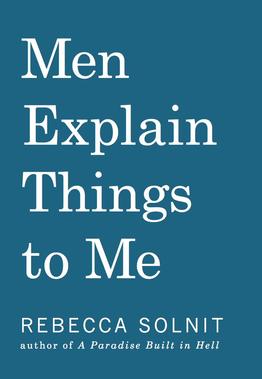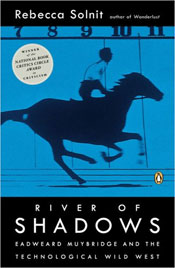Lyn Hejinian is an American poet, essayist, translator and publisher. She is often associated with the Language poets and is known for her landmark work My Life, as well as her book of essays, The Language of Inquiry.

Susannah Bright is an American feminist, author and journalist, often on the subject of politics and sexuality.

Cherríe Moraga is a Xicana feminist, writer, activist, poet, essayist, and playwright. She is part of the faculty at the University of California, Santa Barbara in the Department of English since 2017, and in 2022 became a distinguished professor. Moraga is also a founding member of the social justice activist group La Red Xicana Indígena, which is network fighting for education, culture rights, and Indigenous Rights. In 2017, she co-founded, with Celia Herrera Rodríguez, Las Maestras Center for Xicana Indigenous Thought, Art, and Social Practice, located on the campus of UC Santa Barbara.

Karen Joy Fowler is an American author of science fiction, fantasy, and literary fiction. Her work often centers on the nineteenth century, the lives of women, and alienation.

Phoebe Louise Adams Gloeckner is an American cartoonist, illustrator, painter, and novelist.

Marion Nestle is an American molecular biologist, nutritionist, and public health advocate. She is the Paulette Goddard Professor of Nutrition, Food Studies, and Public Health Emerita at New York University. Her research examines scientific and socioeconomic influences on food choice, obesity, and food safety, emphasizing the role of food marketing.
Linda Alouise Gregg was an American poet.

Manuel John Neri Jr. was an American sculptor who is recognized for his life-size figurative sculptures in plaster, bronze, and marble. In Neri's work with the figure, he conveys an emotional inner state that is revealed through body language and gesture. Since 1965 his studio was in Benicia, California; in 1981 he purchased a studio in Carrara, Italy, for working in marble. Over four decades, beginning in the early 1970s, Neri worked primarily with the same model, Mary Julia Klimenko, creating drawings and sculptures that merge contemporary concerns with Modernist sculptural forms.

Jewelle Lydia Gomez is an American author, poet, critic and playwright. She lived in New York City for 22 years, working in public television, theater, as well as philanthropy, before relocating to the West Coast. Her writing—fiction, poetry, essays and cultural criticism—has appeared in a wide variety of outlets, both feminist and mainstream. Her work centers on women's experiences, particularly those of LGBTQ women of color. She has been interviewed for several documentaries focused on LGBT rights and culture.

Aimee Allison is the Founder of She the People, a national network elevating the political power of women of color.
Squeak Carnwath is an American contemporary painter and arts educator. She is a professor emerita of art at the University of California, Berkeley. She has a studio in Oakland, California, where she has lived and worked since 1970.

Alice Brown Chittenden was an American painter based in San Francisco, California who specialized in flowers, portraits, and landscapes. Her life's work was a collection of botanicals depicting California wildflowers, for which she is renowned and received gold and silver medals at expositions. She taught at the Mark Hopkins Institute of Art from 1897 to 1941.

Mansplaining is a pejorative term meaning "(for a man) to comment on or explain something, to a woman, in a condescending, overconfident, and often inaccurate or oversimplified manner".

Men Explain Things to Me is a 2014 essay collection by the American writer Rebecca Solnit, published by Haymarket Books. The book originally contained seven essays, the main essay of which was cited in The New Republic as the piece that "launched the term mansplaining", though Solnit herself did not use the word in the original essay and has since rejected the term. The September 2015 expanded edition of the book included two new essays: "Cassandra Among the Creeps" and "#YesAllWomen: Feminists Rewrite the Story."

River of Shadows: Eadweard Muybridge and the Technological Wild West is a 2003 book by American writer Rebecca Solnit, published by Viking; in the United Kingdom it was published by Bloomsbury as Motion Studies: Time, Space and Eadweard Muybridge. The book is a biographical portrait of photographer and inventor Eadweard Muybridge, a history of the development of technological change in the West during the later half of the nineteenth century that led to development of the modern film industry in Hollywood and later the information technology industry in Silicon Valley, and an essay focusing on a series of connections between Muybridge's life and the changing human landscape of the American West.

Barbara "Bobbie" Stauffacher Solomon is an American landscape architect and graphic designer. Barbara Stauffacher Solomon is best known for her large-scale interior ‘supergraphics’ and exterior signage at Sea Ranch, a private estate with a utopian vision in Sonoma County, California.
Cathy Colman is an American poet, teacher and editor. Her first book, Borrowed Dress, won the 2001 Felix Pollak Prize for Poetry from the University of Wisconsin Press, chosen by Mark Doty. It made the Los Angeles Times bestseller list in October, 2001. Her second book, Beauty's Tattoo, was published by Tebot Bach Publications in 2009. Her third book, Time Crunch is published by What Books Press, October, 2019.
Joshua Jelly-Schapiro is an American geographer and writer. Among his books are Island People: The Caribbean and the World (2016), Names of New York (2021) and, with the writer Rebecca Solnit, Nonstop Metropolis: A New York City Atlas (2016). Jelly-Schapiro is a regular contributor to The New York Review of Books. He has also written for The New Yorker, Harper's Magazine, The Believer, Artforum, Transition, and The Nation.
Julia Shalett Vinograd was a poet. She is well known as "The Bubble Lady" to the Telegraph Avenue community of Berkeley, California, a moniker she gained from blowing bubbles at the People's Park demonstrations in 1969. Vinograd is depicted blowing bubbles in the People's Park Mural off of Telegraph Avenue in Berkeley.
Summer Brenner is a writer and an activist. Brenner's works include short stories, novellas, noir crime, youth social justice novels and poetry.













